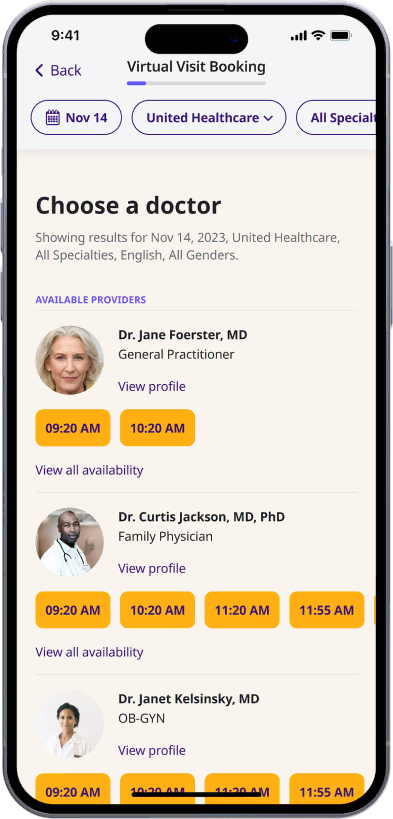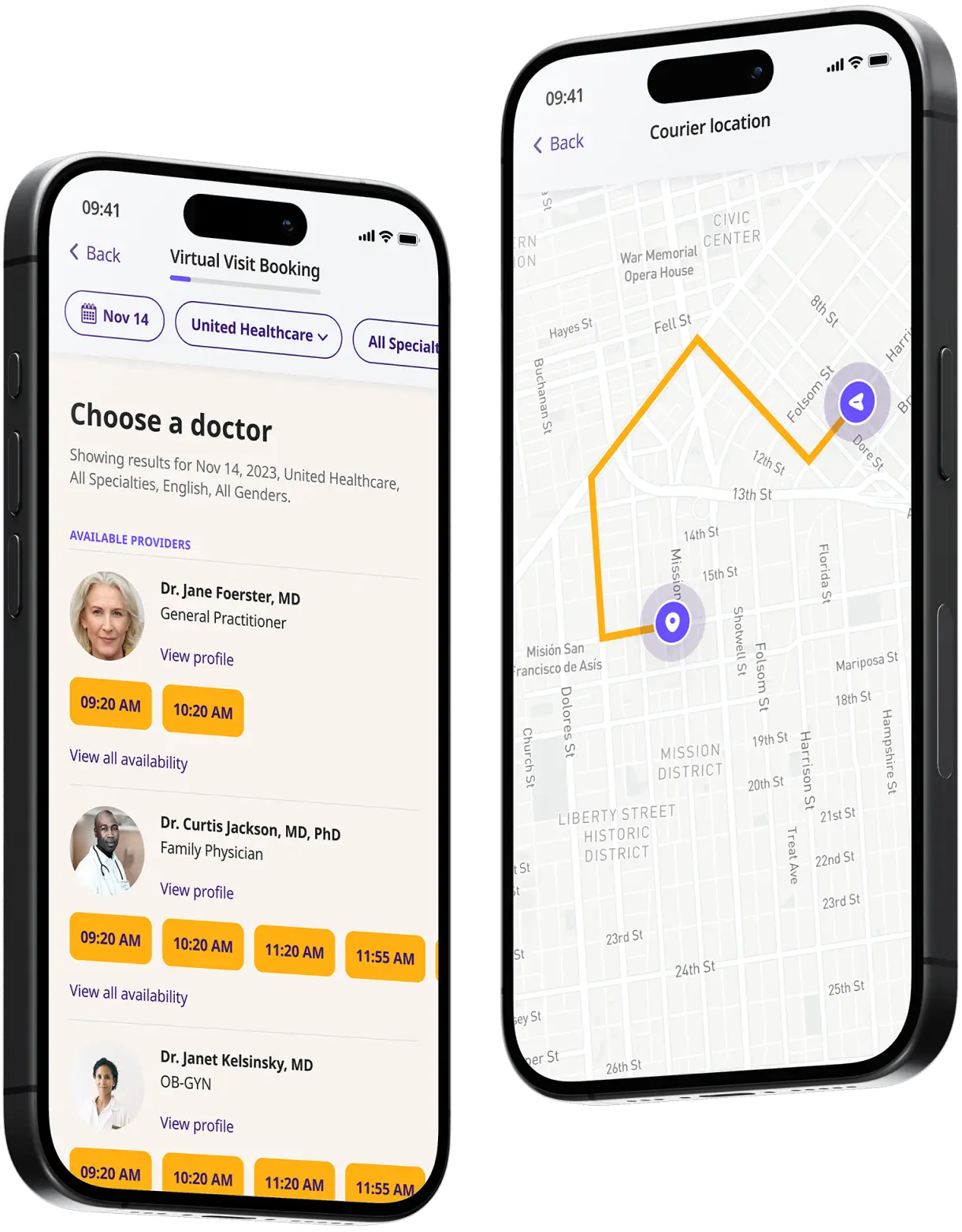Get a Penicillin Prescription Online
Get a prescription for penicillin now! Our doctors are available 24/7 in all 50 states.


Available in 50 states. Insurance accepted.
Fast
virtual visits
24/7 care
assistants
Prescriptions
as needed

24/7 Personal Care
Consult with a physician in 15 minutes, refill an Rx or chat with our care assistants.

Affordable & Convenient
See your cost upfront and get treatment for hundreds of different conditions.

Insurance Accepted
We accept most major insurance plans, making healthcare easy and affordable.
See If Delivery Is Available Near You
Delivery Not Available
Enter your ZIP code to check if prescription delivery is available in your area and how soon your meds could arrive.
How to get started
Choose your doctor, start a virtual visit, and have your prescriptions sent to your preferred pharmacy for pickup — all in just a few easy steps.
Choose a doctor
Choose a physician by availability, specialty, ratings, and more.

Start your video visit
Connect with a doctor in minutes on a secure video call.

Get your prescription
Pick up your meds or have them delivered in as little as an hour.

Available in 50 states. Insurance accepted.
One-Time
Physician Visit
One-time visit with a physician for diagnosis, treatment, Rx, labs, referrals, and doctor’s notes.
Accepted Insurances
See why people turn to DrHouse...
As seen in

Penicillin
Penicillins were the first type of antibiotic drug that doctors used and have saved millions of lives. Penicillin is one type of antibiotic in the group known as penicillins, alongside amoxicillin, flucloxacillin, and co-amoxiclav, that are used to fight bacteria.
Penicillin comes in a number of forms, such as penicillin V, which is one type of antibiotic prescribed to overcome a variety of bacterial infections.
What Is Penicillin Prescribed For?
Penicillin is used to treat certain bacterial infections. They can be prescribed to treat infections such as pneumonia and upper respiratory tract infections, as well as other infections of the throat, mouth, gum, skin, and ears, and are also used in the treatment of scarlet fever and to prevent rheumatic fever, a condition that can develop after strep throat or scarlet fever.
It is also sometimes used to prevent a heart valve infection in patients with a heart condition and can be used in combination with other medications to treat diphtheria, which is uncommon in developed countries.
Penicillin is not prescribed for viral infections such as colds and flu. Taking antibiotics when it is not necessary can increase the risk of getting an infection later on which can then be resistant to antibiotic treatment.
How Does Penicillin Work?
Penicillin works by bursting the bacterial cell walls. The structure of bacterial cells includes peptidoglycan which is a substance that is vital in the bacterial cell structure and creates a “mesh” around the plasma membrane of a cell to prevent particles or external fluid from entering the cell.
When bacteria multiply, the process opens small holes in the cell walls, the newly produced peptidoglycans fill the holes to reconstruct the cell walls. Penicillin works by blocking what is known as the protein struts, which link the peptidoglycans together, preventing the bacteria from closing the holes in the cell walls. This causes the water concentration of the surrounding fluids to rush through the holes into the cell and burst the bacterium.
What Are the Side Effects of Penicillin?
It’s vital to avoid penicillin antibiotics if you have an allergy to them. Before using penicillin, you need to speak to your doctor if you have any allergies to drugs or have any of the following:
- A history of allergies
- Diarrhea that was directly caused by taking antibiotics
- Blood clotting or any other form of bleeding disorder
- Kidney disease
- Asthma
The serious side effects of penicillin can include some of the following:
- Urinating less frequently than usual (or not at all)
- Physical weakness
- Watery or bloody diarrhea
- Skin rash, peeling, or itching
- Fevers, chills, and other flu-like symptoms
- Convulsions, seizures, or blackouts
The less serious side effects that are more common include the following:
- Thrush, which are white patches inside your mouth or throat
- Headaches
- Discharge or itching of the vagina
- Stomach pain, vomiting, or nausea
- Swollen tongue
For more detailed information about Penicillin, you can refer to the following sources:
The content on this page has been medically reviewed for accuracy and comprehensiveness by Amy Dougherty, FNP-BC, AGAC
Related services
Explore more of our services tailored to your needs and discover additional ways we can support your healthcare needs.
Frequently asked questions




